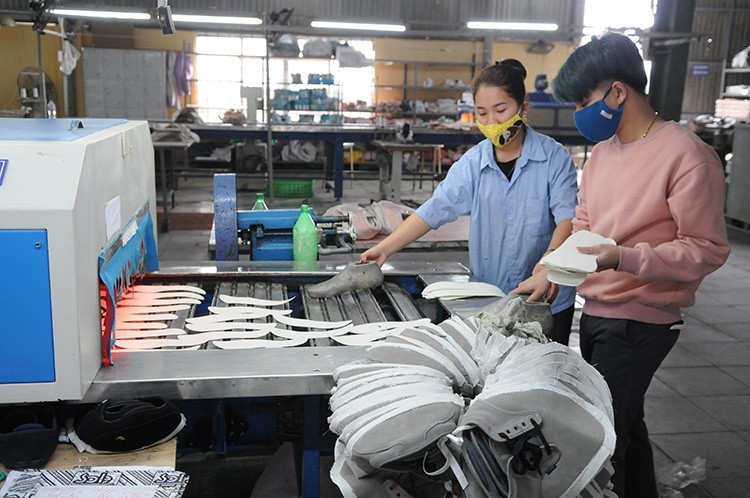 News
News
Ms. Phan Thi Thanh Xuan - Vice President and General Secretary of the Vietnam Leather, Footwear and Handbag Association said that the current situation has a great impact on export industries, including the leather and footwear industry. Total export turnover of leather and footwear in September 2022 reached 2 billion USD, down 30% compared to August 2022 (2.6 billion USD), this was true with the association's forecast 3 months ago.
The cause of the above situation is pointed out that by the fourth quarter of 2022, the decrease in orders due to inflation and the purchasing power of fashion items including footwear in high markets has caused halt import and export activities. Especially fluctuations in 5 major import markets such as the US, EU, Japan, Korea, and China. These markets account for 80-90% of the total export turnover of Vietnam's leather and footwear industry.
Currently, only businesses with traditional customers can maintain orders, but not as expected. Normally, like every year, at the present time, enterprises exporting to traditional markets have signed orders until the end of the second quarter of next year, but with the current situation, even customers are slow to assess the situation. Therefore, the orders are signed in moderation, after completing the first order, the next one is signed, not signing the order for a long time.
The unit price of exported goods also does not increase, if any, it will only increase at a very low rate and enterprises must prove why the increase has been and there is fierce competition.
 |
| Leather and footwear exports in September 2022 decreased by 30% compared to August 2022 |
Besides the decline in orders, unit prices, scarcity as well as difficulties in importing raw materials and accessories are concerns of businesses, especially for small and medium enterprises. Another difficulty is that input costs are currently too high, such as: logistics costs, labor costs and labor scarcity.
But according to Ms. Phan Thi Thanh Xuan, looking back in the first nine months of 2022, the export turnover of the leather and footwear industry still reached 21 billion USD - this figure is higher than the whole year of 2021. Thus, it can be said, the last months Export year is affected but the industry can still achieve the set plan.
“ The best-case scenario for leather and footwear exports in 2022 is expected to be $23-25 billion. While 9 months has reached 21 billion USD, in 3 months it is possible to achieve, despite the decline of the fourth quarter of 2022 ”, said Ms. Phan Thi Thanh Xuan.
Current exchange rate fluctuations, according to leaders of the Vietnam Leather, Footwear and Handbag Association, businesses have signed orders from the beginning and the middle of the year, and the fourth quarter is only being deployed, so exchange rate fluctuations have not affected immediately. ie but in the long run there will be. Because most businesses use USD for payment, for exports because of foreign currency revenue, it will be beneficial but import is disadvantageous (especially disadvantageous for leather because it has to import most of it, 9 months of importing). exports $1.2 billion).
Regarding the use of free trade agreements of the leather and footwear industry, Ms. Phan Thi Thanh Xuan said that the EU-Vietnam Free Trade Agreement (EVFTA), the Comprehensive and Progressive Agreement for Trans-Pacific Partnership Duong (CPTPP) is very well utilized by businesses, up to over 90%. As for the CPTPP Agreement, almost every market has grown, especially Canada has increased strongly, up to 65%, the North American market accounted for 46% of total export turnover. This is also a factor that has helped the export growth of the leather and footwear industry so far this year.
The shortage of raw materials for production, the leader of the Vietnam Leather, Footwear and Handbag Association added: In fact, the supply of raw materials is not difficult for large enterprises due to the large supply chain, but difficult for small businesses because of the simplicity. Single item cannot be imported. To overcome this, enterprises need to diversify their supply sources, especially domestic ones. Enterprises are forced to find more customers to not be dependent on a few traditional customers to avoid the risk that they may leave.
At the same time, promote digital transformation, improve management skills to save costs, increase integration ability.
| Ms. Phan Thi Thanh Xuan - Vice President and General Secretary of the Vietnam Leather, Footwear and Handbag Association: The difficult situation will last from now until the end of the first quarter of 2023 and the market will gradually recover. |